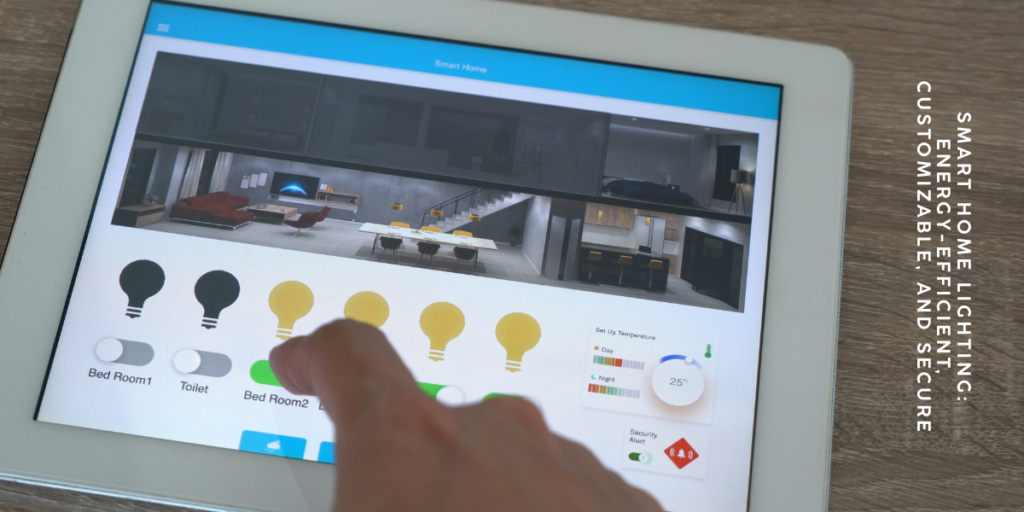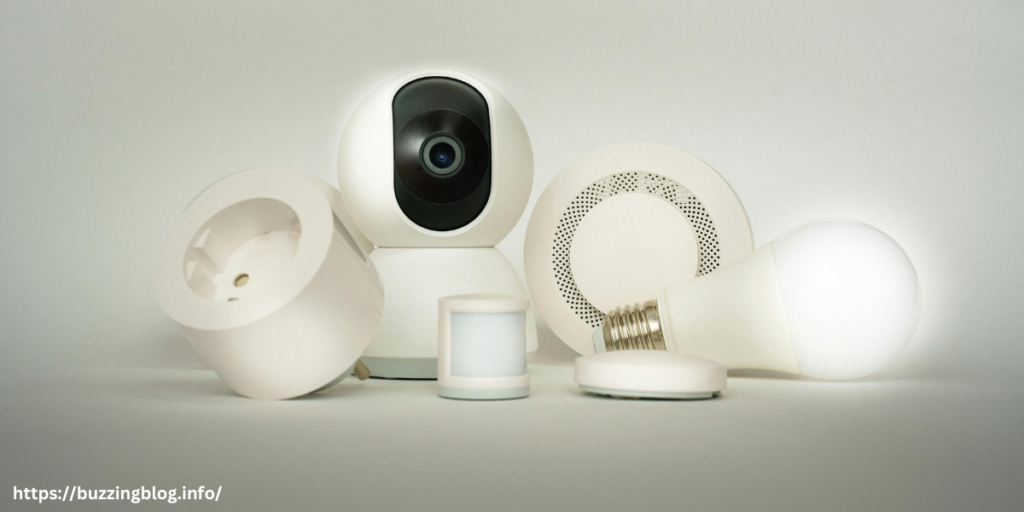Smart Home Lighting: Enhance Comfort, Security, and Savings
Smart home lighting is revolutionizing how we interact with the spaces we live in. Gone are the days when flipping a switch was the only way to control your lights. With the evolution of smart technology, homeowners now have access to a wide array of advanced lighting options that allow for greater control, customization, and automation. From energy efficiency to security, the possibilities are endless. Whether you’re upgrading your home as part of a larger home improvement project or simply looking for added convenience, smart lighting can be a game-changer. In this post, we will cover how smart lighting works, its various benefits, the different systems available, and why this modern upgrade is worth your investment.
What Is Smart Home Lighting?
Smart home lighting refers to a system where light fixtures and bulbs can be controlled remotely through smart devices such as smartphones, tablets, or voice assistants like Alexa, Google Assistant, or Siri. These systems use wireless technologies, such as Wi-Fi, Zigbee, or Bluetooth, to communicate with devices. In some cases, smart home lighting requires a central hub, like the Philips Hue Bridge, which acts as a control point for all the connected bulbs in your home.
At its core, smart lighting enables homeowners to adjust their lighting remotely, schedule lighting changes, and even monitor energy usage. The technology behind smart lighting makes it possible to customize every aspect of your home’s illumination—from the intensity to the color temperature—giving you unprecedented control over your home’s ambiance.
Benefits of Smart Home Lighting

The benefits of smart home lighting go far beyond simple remote control. Below are some of the major advantages, explained in detail:
Energy Efficiency
Smart lighting is one of the best ways to make your home more energy-efficient. Most smart bulbs, particularly LED-based systems, use up to 75% less energy than traditional incandescent bulbs. The ability to dim lights and set timers further reduces energy consumption. Smart lighting systems like those integrated with a Philips Hue Bridge can be programmed to turn off when no one is in the room, or to adjust automatically based on the time of day or natural light levels.
For example, you can set up your system to brighten during the day and dim during the evening, ensuring that you’re never using more light than necessary. Many smart lighting solutions also track electricity usage, giving you real-time data on how much energy your lights are consuming. Over time, this not only leads to lower utility bills but also contributes to reducing your home’s overall carbon footprint.
Convenience
The convenience factor of smart home lighting is one of its biggest selling points. Imagine being able to turn on your lights as you approach your front door, or dim them while you relax on the couch—all without getting up or even touching a switch. With voice assistants like Alexa or Google Assistant, you can control your lights hands-free. For homeowners juggling busy lives, smart lighting systems provide the ability to automate lighting schedules, so you never have to worry about whether you left a light on when you left the house.
This is especially helpful for larger home improvement projects, where smart lighting can be integrated into existing setups, making renovations smoother and more seamless. Smart lighting can also work with geofencing technology, meaning your lights can automatically turn on when you arrive home or shut off when you leave, enhancing convenience without lifting a finger.
Customization and Mood Setting
One of the standout features of smart lighting is its ability to create custom lighting “scenes” that set the mood for any occasion. With just a tap on your smartphone, you can change the brightness, color temperature, or even the color of your lights. Whether you want a warm, cozy ambiance for a movie night or a bright, energizing light for a workday at home, smart lighting offers endless possibilities.
Many systems, including those that work with the Philips Hue Bridge, allow you to choose from millions of colors and even sync your lights to music or movies for a more immersive experience. This level of customization enables you to create an atmosphere that suits your lifestyle and preferences, enhancing the comfort and aesthetic appeal of your home.
Enhanced Security
Smart home lighting also plays a crucial role in home security. By setting schedules or using motion-detecting lights, you can deter intruders by creating the illusion that someone is home even when you’re away. Some systems allow you to integrate your lights with security cameras or alarms, so your lights automatically turn on when motion is detected. This not only increases the security of your property but also offers peace of mind when you’re traveling or working late.
Moreover, smart outdoor lighting solutions can be a great addition to your home improvement efforts, providing well-lit outdoor spaces that improve both security and curb appeal. Smart floodlights, for example, can illuminate your driveway or backyard automatically when they detect movement, adding an extra layer of safety to your home.
Types of Smart Home Lighting Systems

When it comes to choosing a smart lighting system, there are several types to consider, each with its own advantages and use cases:
Smart Bulbs
Smart bulbs are the most basic and accessible type of smart lighting. They work in standard light fixtures but connect to your home Wi-Fi or a hub like the Philips Hue Bridge. These bulbs can be controlled via an app, allowing you to adjust brightness, color, and scheduling. Leading brands like Philips Hue and LIFX offer bulbs that are compatible with multiple smart home platforms.
Smart bulbs are ideal for people looking for a simple, easy-to-install solution. Whether you want to brighten up your kitchen or create a relaxing bedroom atmosphere, smart bulbs offer great flexibility. Since they use energy-efficient LEDs, they’re also a fantastic option for reducing your electricity consumption.
Smart Switches and Dimmers
If you’re looking for more control over existing lighting fixtures, smart switches and dimmers are an excellent choice. These allow you to convert your traditional lights into smart lights without replacing the bulbs. They offer full control over the lights’ power and dimming capabilities and can be controlled through an app or voice assistant.
Smart switches are particularly useful if you have hard-to-reach fixtures or chandeliers. While the installation process requires basic electrical work, these switches provide a cost-effective way to upgrade your lighting without having to replace every bulb in the house.
Smart Lighting Systems with Hubs
Some smart lighting systems operate through hubs, such as the Philips Hue Bridge. A hub acts as a central point of communication for all your smart lights, ensuring a more reliable connection and better performance, especially if you have multiple smart bulbs or smart devices in your home. A hub allows for more advanced automation, such as syncing lights with entertainment systems, and generally supports a larger number of devices.
How to Set Up a Smart Lighting System
Setting up smart lighting can be simple, but it’s essential to consider the scale and type of system you want to implement. Here’s a basic guide to help you get started:
Step 1: Determine Your Needs
Assess your home’s layout and decide where smart lighting will be most beneficial. Consider factors like the size of your home, the number of rooms, and whether you’ll be integrating other smart devices.
Step 2: Select the Right Components
Based on your needs, choose between smart bulbs, switches, or a hub-based system like the Philips Hue Bridge. Smart bulbs are ideal for smaller setups, while a hub is better suited for larger homes with many rooms or outdoor spaces.
Step 3: Install and Connect
Once you’ve chosen your lighting solution, install the bulbs, switches, or hub. Most smart lighting products come with easy-to-follow instructions, and the entire process can usually be completed in a few minutes. After installation, connect the devices to your home’s Wi-Fi network or hub, and configure them using the manufacturer’s app.
Step 4: Customize and Automate
After installation, take advantage of the system’s automation features. Set schedules for your lights to turn on and off, or create different lighting scenes for different times of the day. Don’t forget to explore voice control options for hands-free convenience.
Smart Lighting for Outdoor Spaces
Smart home lighting isn’t just for your indoor spaces—it can greatly enhance the functionality and security of your outdoor areas as well. Here’s how:
Motion-Activated Lights
Smart outdoor lighting, such as motion-activated floodlights, automatically turns on when movement is detected. These are perfect for driveways, entryways, and backyards, where safety and security are critical. Motion lights also conserve energy, only turning on when needed.
Weatherproof Smart Lights
Many smart outdoor lighting options are built to withstand the elements. Whether it’s rain, snow, or intense sun, these lights are durable and offer reliable performance year-round. You can control your outdoor lights from the same app as your indoor lighting, making it easy to manage your entire property’s illumination from one place.
Is Smart Home Lighting Worth the Investment?
Smart home lighting can be more expensive than traditional lighting upfront, but the long-term benefits far outweigh the initial costs. The energy savings, increased convenience, and enhanced home security make it a worthy investment. Whether you’re planning a home improvement overhaul or just looking to add a modern touch, smart lighting provides value that lasts.
Conclusion
Smart home lighting offers unparalleled control, energy efficiency, and customization, making it one of the most effective ways to modernize your home. Whether you’re managing lights through a Philips Hue Bridge or automating them with your smartphone, smart lighting enhances your daily life in numerous ways. From boosting home security to setting the perfect ambiance for any occasion, it’s clear that smart lighting is more than just a luxury—it’s a practical upgrade that pays off in convenience, cost savings, and increased home value.
FAQs
1. Can I use smart lighting without a hub?
Yes, many smart bulbs, like those from LIFX and TP-Link, can be controlled via Wi-Fi without the need for a hub. However, hub-based systems, such as those with the Philips Hue Bridge, offer more advanced automation features and better reliability.
2. Do smart lights work with all types of light fixtures?
Most smart bulbs can be used in standard fixtures, but specialty fixtures like dimmable or high-voltage lights may require specific smart lighting solutions. Smart switches and dimmers provide greater compatibility with all types of bulbs.
3. Is smart lighting energy efficient?
Yes, smart lighting is highly energy-efficient, especially LED-based systems. Features like dimming, scheduling, and motion detection help reduce unnecessary energy consumption, lowering electricity bills over time.
4. Can I control smart lighting when I’m not at home?
Absolutely! With a Wi-Fi connection, you can control your smart lighting from anywhere using a smartphone app. Many systems also allow you to set timers or use geofencing to automate your lights based on your location.
5. Are smart lights difficult to install?
Most smart bulbs are as easy to install as traditional bulbs. Smart switches and dimmers may require some basic electrical work but come with detailed instructions, making the process straightforward for most homeowners.












Post Comment